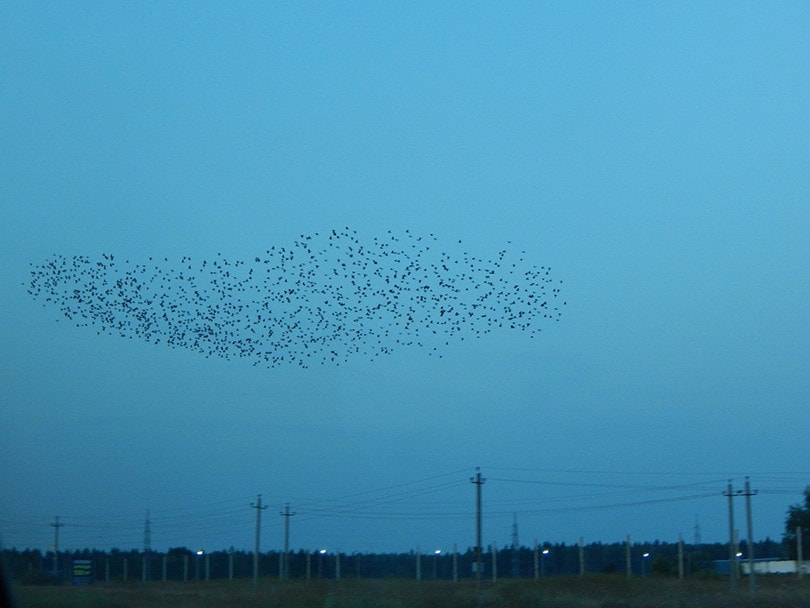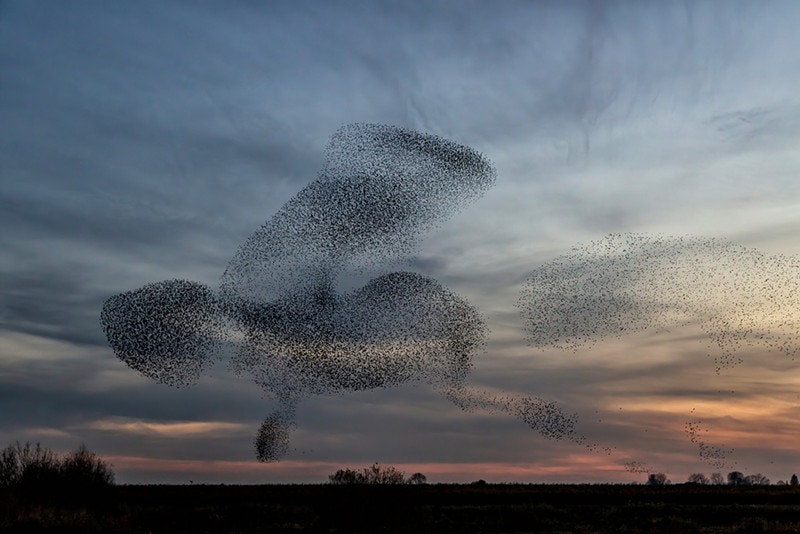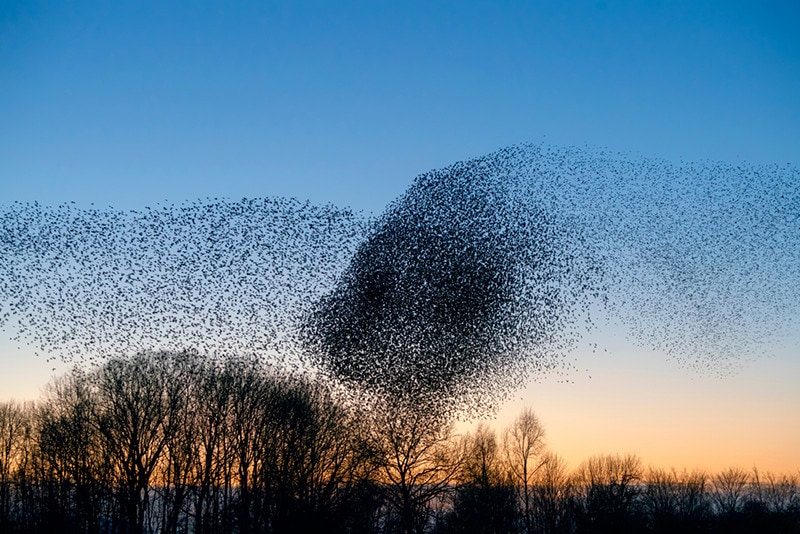Why Do Starlings Swarm? Starling Murmurations Explained!
Last Updated on

Starlings have become an increasingly common bird in the US ever since they were introduced in the late 19th Century. And, with the increase in population has come an increase in the incredible sight of these birds flocking and flying together, creating a synchronized formation known as a murmuration.
Murmurations most often occur in wintertime, and they are usually seen just after dusk. They can consist of half a million birds or more and the gathering is named for the gentle murmuring sound that the birds’ wings and gentle flight calls make when they fly in formation.

What Is a Murmuration?
A murmuration is a gathering of thousands, or as many as hundreds of thousands, of starlings as a single flock. The birds fly in unison, swooping, diving, and seemingly flying as a single unit before they all settle down and roost for the night. Although most commonly seen in the UK, murmurations have become an increasingly common sight in the US, too, since starling numbers have increased.

What Purpose Do They Serve?
Although there is no definitive answer to why starlings murmurate, one popular theory is that they do so as an invitation to other starlings to join the flock, which is why you will see others join the group and why, after about 45 minutes of formation flying, the starlings swoop down, en masse, to nest for the night.
Another theory is that flying in close proximity helps increase warmth, so the birds have higher body temperatures when they settle down for the night.
It may also be the case that it provides safety in numbers, so while an individual starling might be predated at night, joining a large flock to nest, provides safety to all members of the large flock.

Where Can I Find Murmurations?
Starlings can be found throughout the US and there are believed to be more than 200 million European starlings on our shores. Anywhere where flocks of starlings can be found, you may be able to witness a murmuration sometime between late September and early December.
These formation flights typically occur in large open spaces, such as fields or over parks. They can also occur in woodland areas. Although they can occur in any weather, murmurations most often occur during calm and clear evenings.
What Time of Year Can You See Starling Murmurations?
Murmurations are most often seen in mid-autumn to winter with the majority occurring in October and November. However, they may also be seen in late September and early December.

Are Starlings the Only Birds That Do Murmurations?
Many species of bird flock together and fly together, but murmuration usually refers to the gathering of starlings and the seemingly synchronized flight that they take. Such flights are not seen in other birds.
Are Murmurations Rare?
Murmurations do not occur every night or in all locations, and even when one occurs in a specific spot there is no guarantee that another will happen in the following nights. If there is a large population of starlings in your area, murmurations are not uncommon during spring and early winter, but if you live somewhere where there are very few starlings, this type of flocking will be unusual to see.
Conclusion
Starling murmurations are a true wonder of nature and it can be breathtaking to see hundreds of thousands of birds flying in formation. They typically occur just after dusk and in October and November, and they will occur anywhere that large populations of this introduced bird species live. Although other birds do gather in numbers and fly in formation, the swooping and sweeping murmuration is unique to starlings.
Featured Image Credit: Unachicalinda, Pixabay
About the Author Robert Sparks
Robert’s obsession with all things optical started early in life, when his optician father would bring home prototypes for Robert to play with. Nowadays, Robert is dedicated to helping others find the right optics for their needs. His hobbies include astronomy, astrophysics, and model building. Originally from Newark, NJ, he resides in Santa Fe, New Mexico, where the nighttime skies are filled with glittering stars.
Related Articles:
10 Types of Hummingbirds in Arkansas (With Pictures)
8 Types of Hummingbirds in Nebraska (With Pictures)
5 Types of Hummingbirds in Idaho (With Pictures)
3 Types of Hummingbirds in Mississippi (With Pictures)
8 Types of Hummingbirds in Kansas (With Pictures)
5 Types of Hummingbirds in West Virginia (With Pictures)
5 Types of Hummingbirds in Ohio (With Pictures)
Where Do Nuthatches Nest? Nuthatch Nesting Habits Explained
